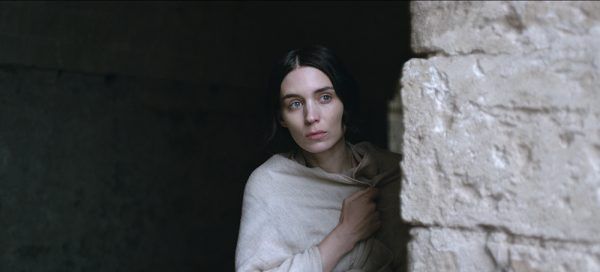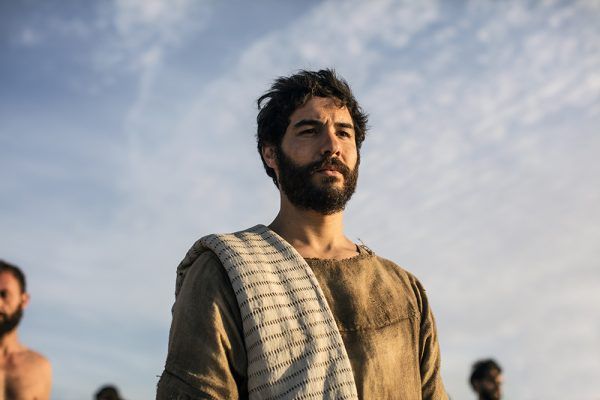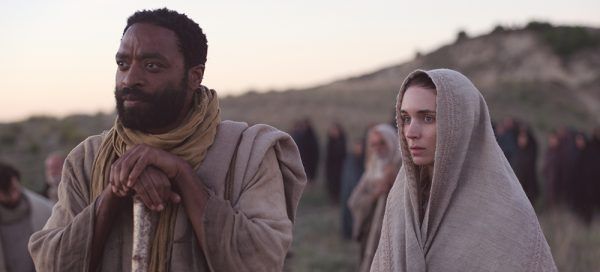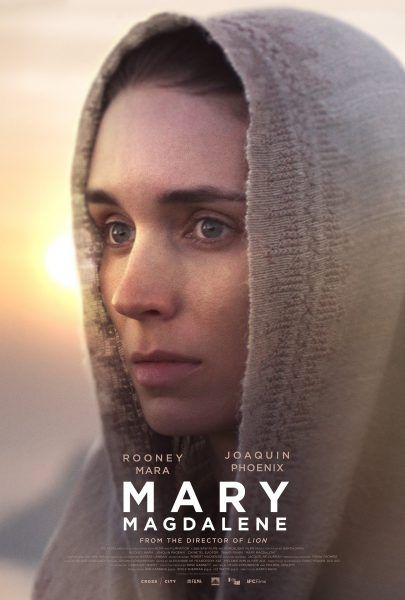I imagine there will be audiences quick to dismiss Mary Magdalene because it seems too Christian or not Christian enough. Evangelicals will look at a scene of Mary baptizing followers of Jesus and blanch, and secular audiences may not have the patience for any movie that is unapologetically religious. As my last name may have tipped you off, I was not raised Christian, so while I technically lean closer to a secular reading of the movie, I was impressed by how director Garth Davis unapologetically leans into a social justice reading of Jesus’ teachings as seen through the eyes of Mary. By contrasting Mary against the crusading male apostles, Mary Magdalene is able to create a positive display of Christianity rather than seeking to condemn non-believers.
Set in Judaea in 33 CE, the film follows Mary of Magdala (Rooney Mara), a young woman who feels uncomfortable in her village where she’s a talented healer, but she’s expected to be married off to some family friend and produce babies. After having a mental episode over her situation and the men in her village believing she’s possessed by demons, she’s visited by Jesus of Nazareth (Joaquin Phoenix), who comforts here and says there are no demons here. Struck by Jesus’ quiet demeanor and awesome abilities, Mary resolves to leave her family and follow the Nazarene. Although Jesus’ apostles like Peter (Chiwetel Ejiofor) and Judas (Tahar Rahim) believe that Jesus will lead a revolution to bring down Rome and create the Kingdom of Heaven on Earth, Mary sees that while Jesus’ teachings and acts are revolutionary, he is not seeking to lead an insurrection.
The film struggles a little bit to get going, and it’s not until Mary is with the other apostles that the story really takes shape. That’s not to say that Mary is defined by the men in her life, but rather her story and her ideas are given life by conflicting with Jesus’ other apostles. Telling Mary’s story is a bit tricky since it’s difficult to ignore the Jesus of it all—after all, how do you tell his story and not make him the main figure? But the film wisely plays Jesus as soft-spoken, low-key figure, highlighting “the lamb” and letting Mary try to see him instead of just using him as a means to an end as Peter and Judas wish to do.
Mary Magdalene has come under some fire for having Jesus and Mary as white while Judas is played by Rahim, a French actor of Algerian descent. But to the film’s credit, it paints Judas a three-dimensional figure and casts his beliefs in oppositions to Mary’s. While Mary believes that the best way to honor Jesus is to follow his teachings and act in a merciful, compassionate manner, Judas (and to a lesser extent Peter) see Jesus as the leader of a rebellion. The film paints Judas a man still reeling from the death of his wife and child at the hands of the Romans (Mary Magdalene never attempts to be a straight adaptation of the New Testament, instead using it as a starting point for an exploration of Jesus’ teachings), who believes that Jesus will raise his family from the dead and bring down the Roman Empire.
This conflict is what gives Mary Magdalene its richness and casts it into a modern conversation about the purpose of Christianity. If you believe that Christianity is about personal enrichment and how it’s a tool for achieving your own goals removed from Jesus’ teachings, then the film sees you as a misguided Judas. Instead, Mary is the hero of this telling because she sees Jesus as a way to serve others. For example, one scene involves Mary and Peter, having been instructed to spread Jesus’ word, come across a village of starving Samarians. As my Christian wife pointed out, if the purpose of Jesus is to just make more Christians, you leave the dying behind—and that is Peter’s first instinct. But if you see the purpose of Jesus to comfort the afflicted and to show love and compassion, you behave as Mary does, by bringing kindness to people who need it.
The liberal Christianity presented in Mary Magdalene rarely gets its due, but it’s welcome to see Davis give it his full attention. Some may counter that Mary Magdalene is simply a liberal counterpoint to the Religious Right, but I would offer that the liberal message is more in tune with the social justice message of the New Testament. Which is more likely: that a message upholding the rich and powerful spread to 2.18 billion people, or that a message about charity, love, compassion, and redemption hooked people in?
What I admire about Mary Magdalene is that it’s not trying to secularize and inherently religious story. As a secular-leaning Jew, I never felt that the film was afraid of its Christianity. Instead, through the exquisite production values (cinematographer Grieg Fraser knocks it out of the park, yet again) and strong performances, I was drawn into Mary’s world and how she sees Jesus contrasted against those who would want to use Jesus for their own ends. It’s a movie that has a clear message, and it’s a message worth hearing.
Rating: B





